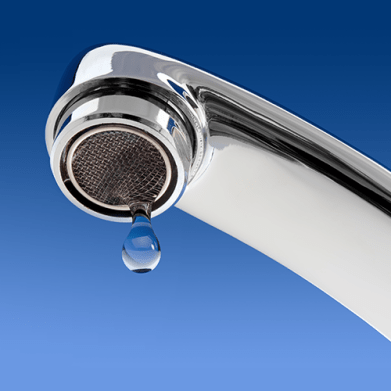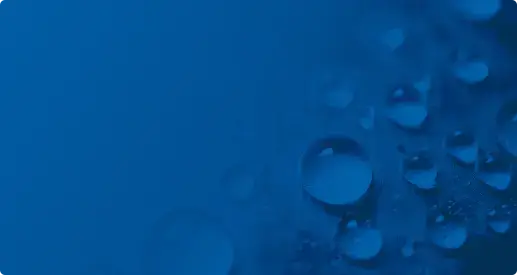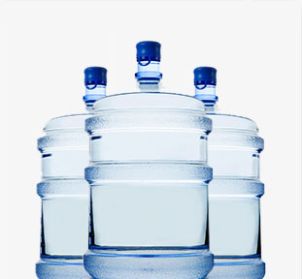
At-Home Water Conservation Methods

Water conservation doesn’t have to be tricky. In fact, some of the most effective methods are also the simplest:
- Choose appliances that improve water efficiency
- Build better bathing and cleaning habits
- Think about when and how you irrigate
- Use smart apps and features to track water resources and conservation
Why does it matter? As drought events become longer, more frequent and even more severe, North Americans are increasingly concerned about how potential water shortages could affect their lives. One of the best ways to address this concern is to find out how you can do your part to conserve water — and that means brushing up on a few simple, at-home tips and tricks.
It’s essential for each and every one of us to rethink our daily water use. Here are some of the best water conservation methods that could save your household (and the environment) thousands of gallons of water annually.
Tips for Smarter Water Conservation
If you want to build habits you’ll stick to, don’t make huge changes all at once; instead, start small and take one step at a time. The same is true for water conservation. When it’s easy to conserve water, you’ll do so without even thinking about it.
Here are a few water conservation tips to help you live more sustainably:
In the Kitchen
- Dishwasher
The first thing you need to know is that, despite what you may have heard, the right dishwasher is actually a great tool for water conservation. As long as you choose a water- and energy-efficient model, you could save 24 gallons as opposed to hand-washing your dishes. To save even more water, only run the washer when you have a full load. Just remember to scrape food off your dishes first and soak them instead of holding them under running water. - Faucet
Have you ever seen faucet aerators? They’re mesh screens that create better flow, can improve the taste of drinking water and more. Some aerators can also conserve water by reducing the flow to less than one gallon per minute. If you forget to turn off the faucet for a moment while cooking or cleaning — an easy mistake when building better water management habits — an aerator helps you waste less. - Garbage Disposal
To save gallons every day, skip the garbage disposal and compost instead. Compost helps improve soil moisture and retention, which means you can cut back on irrigation.
- Cooking Utensils
There are plenty of ways to get smarter about water use without impacting your cooking habits. For example, remind yourself to turn off that faucet as soon as you’re done with it. You can also try steaming instead of boiling, using bowls instead of colanders and reusing containers to cut down on the amount of washing you have to do later. Even rinsing fruits and vegetables can be a chance to reduce waste if you save that wash water for houseplants or your garden.
In the Bathroom
- Baths and Showers
Showers and baths are a great place to start saving water resources. Start by installing low-flow shower heads – according to the U.S. Environmental Protection Agency, these can save an average family 2,700 gallons per year. that can save 2.5 gallons of water every time. Additionally, set a timer to keep track of how long your showers are and slowly chip away at your best time. You can also fill the bathtub only halfway or turn off the faucet when washing your hair.
- Sink
Want to save up to 8 gallons per day? Just turn the water off when brushing your teeth or shaving. You can also plug the sink instead of using running water to rinse your razor — that can save up to 300 gallons per month.
- Leaks
Leaky toilets and faucets can run up your water bill and increase your environmental footprint without you even knowing it. Conduct regular inspections to ensure everything is working properly — and if you notice an issue, think carefully before you choose a DIY solution. Sometimes, expert help is the best way to solve a problem without wasting even more water.
Outdoors
- Irrigation Schedule
To save up to 25 gallons each time you water, try irrigating early in the morning or later in the evening when temperatures are cooler. Water deeply but less frequently to reduce water use while creating healthier, stronger landscapes, and consider adding a layer of organic mulch to reduce evaporation and prevent weeds (which could save up to 30 gallons per 1,000 sq. ft. every time you water). You should also remember to turn off your irrigation system whenever you can take advantage of rainwater.
- Sprinklers and Hoses
Choose sprinklers that are designed with water efficiency in mind. Make sure they’re installed and angled so they water your plants, not the house or sidewalk; that can save up to 15 gallons every time you water. If you use a garden hose, consider using an automatic shut-off nozzle or sprayer. Unlike a regular hose, which will just keep running, these options help stop water flow until you actively turn it back on. This helps reduce water waste if you accidentally leave your hose running.
- Plants
When you put native plants in your yard or garden, you’re making a great decision for water use. That’s because local life has adapted to survive based on the amount of rainwater and other resources in your area, which reduces the need for irrigation.
Water Treatment
Many households need to have certain types of water treatment systems in place to ensure they’re getting the water quality they need for drinking, cooking, cleaning, bathing and more. Making sure you’re choosing the right ones can make a real difference in your water usage.
- Drinking Water Filtration
Many homes need to filter their water to ensure it’s cleaner and safer, so make sure you’re looking at efficiency here as well. For example, Culligan’s Aquasential® Smart RO is the world’s most efficient reverse osmosis system.* It’s 3 to 5 times more efficient than other leading ROs. That means less water usage and lower water bills.
- Water Softening
The right water solutions can help you take control of your water resources in more ways than one. For example, the Culligan Aquasential® Smart High-Efficiency Water Softener allows you to set water conservation goals and track usage, giving you insight into your existing habits and enabling you to make targeted improvements. It’s also the world’s most efficient water softener, using less water, salt and energy.**
Looking for the right filtration or softening system? Try our FREE Water Solutions Finder
Water Conservation: Quick Facts
Although it’s important to know all the smartest water conservation methods, there’s always more to the story. You should also be aware of water facts like these:
- Average Water Use
Until 2005, Canadians used 330 liters of water per person per day; that number had dropped to 250 by 2020. The latest data puts Americans at around 82 gallons per person per day, or about 310 liters. Although people are becoming more aware of water supply stressors and creating better habits, a growing global population means that water use will likely continue expanding. - Drought Events
As climate change and other factors impact global weather patterns, droughts are becoming more common throughout the world. In early April 2023, more than 23% of the U.S. — 43.8 million people — experienced drought. Similarly, in late February 2023, much of western Canada was in moderate to severe drought. Check out the North American Drought Monitor to see the latest data for your region.
- Water Restrictions
Some areas respond to drought and other water problems by creating restrictions. For example, in June 2022, mandates in southern California sought to reduce water use by 35%, mostly by limiting irrigation. As drought events grow in severity and frequency, more regions might have to consider restrictions like these. - Effects of Overconsumption
Because there’s a limited supply of fresh water available on our planet, overconsumption impacts the world in all kinds of ways. For example, when people get water from lakes and reservoirs, those sources can be depleted — which affects recreation, wildlife habitats, biodiversity, crop health and more. - Waste vs. Necessity
There’s a difference between using water you actually need and wasting it by accident or through carelessness. You shouldn’t stop drinking water or cut back on the amount of time you spend washing your hands; while these things may technically conserve water, they lead to other issues that could be just as wasteful or even negatively impact your health.
Benefits of Better Water Conservation Habits
Now that you know how to improve your water habits, let’s find out what could happen when you do:
- Cost Savings
The average family spends at least $1,000 per year on water. Using simple water-saving tips such as choosing better faucets and appliances could save up to $380 annually. That’s just one change; think of all the cost savings you could enjoy by making water conservation practices part of your everyday life. - Reduced Environmental Footprint
The more water you use, the bigger your environmental footprint becomes. Water conservation methods help you reduce your impact on the natural world. That helps you become a better, more responsible citizen and a protector of your local resources. - Better Water Management
In many ways, you’re only responsible for your own water use and management. However, reducing water consumption helps minimize the need for strict regulations like those in California. If you’re smart about your habits from the very beginning, your community will have less need to control water use — all because you know how to be responsible. - Other Benefits
When you think critically about water usage, you could start making changes that have different positive impacts. For example, while trying to use your washing machine more efficiently, you’ll likely hear that hot water consumes more energy. You might start using cold water from now on because, while it doesn’t necessarily save water, it helps protect the environment in other ways. Just like that, you’ve learned something new and applied it to your life — and it all begins by brushing up on water habits.
Water Conservation Starts With You
Battling water loss is a shared responsibility, but it starts at home. There are plenty of water conservation practices that help you respect natural resources without sacrificing your health, comfort or even the beauty of your backyard garden. All you have to do is get smart about water – but that doesn’t mean you have to forgo the solutions that make your water the best it can be for your family and your home.
Learn more about your options to get the quality water you need with solutions that help you keep water efficiency in mind. It’s easy to get started with a free, in-home water test and consultation – schedule yours today.
*Efficiency is based on 3rd party testing to NSF/ANSI standards for a tanked RO system.
**HE Softener when configured with proportional upflow brining with Aqua-Sensor®
Related Articles
Can You Reuse Water Bottles?
7 min read
Ask Culligan: BPA Water Bottle Meaning
7 min read
Related Tags
Find A Location Near Me

Schedule Your Free
In-Home Water Test
Get better water in your home by scheduling an appointment with your local Culligan Water Expert.
Discover More
See All Articles

Can You Reuse Water Bottles?
It may not be wise to use those single-use plastic water bottles over and over.
7 min read

Explore

Explore
Our Products

Water Softeners
With any of our soft water systems, get more out of your water-using appliances while spending less on energy and detergent.
View Products

Water Delivery
There’s never been a better time to enjoy the convenience of scheduled bottled water deliveries from the Culligan® Water Experts
View Products

Water Filtration Systems
Culligan's water filtration systems have improved water quality for thousands of families worldwide.
View Products
